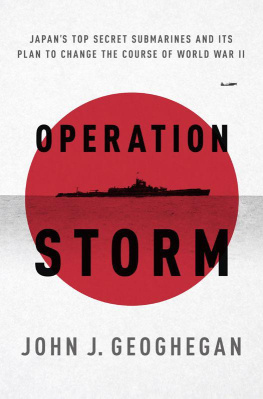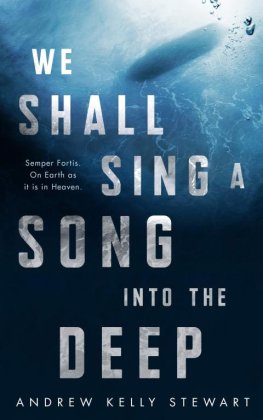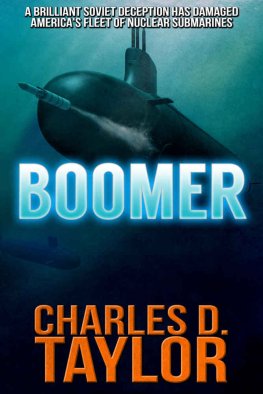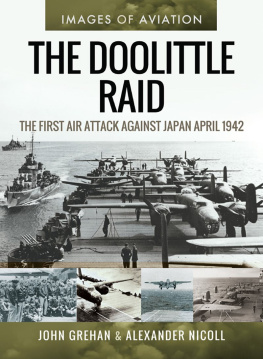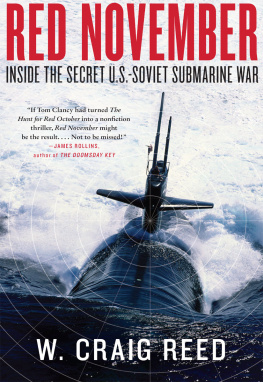John Geoghegan - Operation Storm: Japans Top Secret Submarines and Its Plan to Change the Course of World War II
Here you can read online John Geoghegan - Operation Storm: Japans Top Secret Submarines and Its Plan to Change the Course of World War II full text of the book (entire story) in english for free. Download pdf and epub, get meaning, cover and reviews about this ebook. year: 2013, publisher: Crown, genre: Non-fiction. Description of the work, (preface) as well as reviews are available. Best literature library LitArk.com created for fans of good reading and offers a wide selection of genres:
Romance novel
Science fiction
Adventure
Detective
Science
History
Home and family
Prose
Art
Politics
Computer
Non-fiction
Religion
Business
Children
Humor
Choose a favorite category and find really read worthwhile books. Enjoy immersion in the world of imagination, feel the emotions of the characters or learn something new for yourself, make an fascinating discovery.
- Book:Operation Storm: Japans Top Secret Submarines and Its Plan to Change the Course of World War II
- Author:
- Publisher:Crown
- Genre:
- Year:2013
- Rating:3 / 5
- Favourites:Add to favourites
- Your mark:
Operation Storm: Japans Top Secret Submarines and Its Plan to Change the Course of World War II: summary, description and annotation
We offer to read an annotation, description, summary or preface (depends on what the author of the book "Operation Storm: Japans Top Secret Submarines and Its Plan to Change the Course of World War II" wrote himself). If you haven't found the necessary information about the book — write in the comments, we will try to find it.
In 1941, the architects of Japans sneak attack on Pearl Harbor planned a bold follow-up: a potentially devastating air raid--this time against New York City and Washington, DC. The classified Japanese program required developing a squadron of top secret submarines--the Sen-toku or I-400 class--which were, by far, the largest and among the most deadly subs of World War II. Incredibly, the subs were designed as underwater aircraft carriers, each equipped with three Aichi M6A1 attack bombers painted to look like US aircraft. The bombers, called Seiran (which translates as storm from a clear sky), were tucked in a huge, water tight hanger on the subs deck. The subs mission was to travel more than half way around the world, surface on the US coast, and launch their deadly air attack. This entire operation was unknown to US intelligence, despite having broken the Japanese naval code. And the amazing thing is how close the Japanese came to pulling off their mission.
Meticulously researched and masterfully told, Operation Storm tells the harrowing story of the Sen Toku, their desperate push into Allied waters, and the dramatic chase of this juggernaut sub by the US navy. Author John Geoghegans first person accounts from the last surviving members of both the I-401 crew and the US boarding party that captured her create a highly intimate portrait of this fascinating, and until now forgotten story of war in the Pacific.
John Geoghegan: author's other books
Who wrote Operation Storm: Japans Top Secret Submarines and Its Plan to Change the Course of World War II? Find out the surname, the name of the author of the book and a list of all author's works by series.

